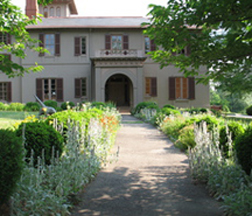Ellarslie’s “Before There Was Trenton” Surveys More Than 350 Year History

 This year New Jersey observes the 350th Anniversary of its political establishment in 1664. To commemorate the event, The Trenton City Museum at Ellarslie in Cadwalader Park is displaying items dating back to the mid-1600s, a time before Trenton or even Trent’s Town existed.
This year New Jersey observes the 350th Anniversary of its political establishment in 1664. To commemorate the event, The Trenton City Museum at Ellarslie in Cadwalader Park is displaying items dating back to the mid-1600s, a time before Trenton or even Trent’s Town existed.
Curated by Trenton Museum Society Trustee David Bosted and son Nicholas Bosted, the exhibition, “Before There Was Trenton,” opened last month and will continue through October 12.
Both Bosteds will deliver a formal lecture on their subject at 2 p.m. on the last day of the exhibition, Sunday October 12,
Prior to 1664, New Netherland was a colony founded by the Dutch on the east coast of North America. The Dutch colony extended from Hartford, Conn. in the east to Albany, New York, in the north to Delaware in the south, encompassing parts of what are now the states of New York, New Jersey, Pennsylvania, Maryland, Connecticut, and Delaware. The New Netherland colony included three major rivers: Nord (North River, now the Hudson River), Sud (South River, now the Delaware River) and the Versche (Fresh) River (now the Connecticut River). The English wrested control of the colony from the Dutch in 1664, turning its capital, New Amsterdam, into New York City.
The Dutch colonial efforts were mostly directed toward trade with Native Americans. However, their permanent settlements in some cases caused conflict with native peoples as well as with several other European powers, especially England, Sweden and France.
Beaver pelts were especially sought after for the fur trade. Marten, fox, otter and mink were also bartered. In 1624 (the year New Amsterdam was first settled), Dutch settlers shipped 1500 beaver and 500 otter skins to Europe. Thereafter, the fur trade grew enormously under the Dutch. Fort Orange (now Albany) and New Amsterdam (now New York City) were the centers of the fur trade, reaching deep into the Lenni Lenape and Mohawk tribal territory, and promoting contact between the Dutch and the Native peoples.
“Before There Was Trenton” recalls that early period of exploration, contact, and settlement.
Among the items on display are items highly valued in the fur trade: hand-forged trade axes, knives, and other metal tools; easily transportable and popular trading commodities like the red “white heart” glass trade beads made in Venice; objects reflecting Dutch nautical exploration and the fur trade; and Lenni Lenape stone tools from the Delaware Valley as well as early agricultural items.
Tobacco, another highly desirable trade commodity, is represented in the display by early tobacco pipes. Because tobacco was so expensive, the 17th century pipe bowls were small, holding only a pinch of tobacco.
For more information about the exhibit or the talks, contact curator David Bosted or Trenton Museum Society President Richard Willinger at tms@ellarslie.org or (609) 989-1191.
Trenton City Museum at Ellarslie Mansion is open Tuesday through Saturday 11 a.m. to 3 p.m.; Sunday 1 to 4 p.m.; closed Mondays and municipal holidays. For more information, visit www.ellarslie.org.
———

